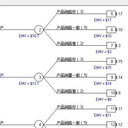Production of the isoflavones genistein and daidzein in non-legume dicot and monocot tissues.
Ключови думи
Резюме
Metabolic engineering for production of isoflavones in non-legume plants may provide the health benefits of these phytoestrogens from consumption of more widely used grains. In legumes, isoflavones function in both the symbiotic relationship with rhizobial bacteria and the plant defense response. Expression of a soybean isoflavone synthase (IFS) gene in Arabidopsis plants was previously shown to result in the synthesis and accumulation of the isoflavone genistein in leaf and stem tissue (Jung et al., 2000). Here we further investigate the ability of the heterologous IFS enzyme to interact with the endogenous phenylpropanoid pathway, which provides the substrate for IFS, and produces genistein in several plant tissue systems. In tobacco (Nicotiana tabacum) floral tissue that synthesizes anthocyanins, genistein production was increased relative to leaves. Induction of the flavonoid/anthocyanin branch of the phenylpropanoid pathway through UV-B treatment also enhanced genistein production in Arabidopsis. In a monocot cell system, introduced expression of a transcription factor regulating genes of the anthocyanin pathway was effective in conferring the ability to produce genistein in the presence of the IFS gene. Introduction of a third gene, chalcone reductase, provided the ability to synthesize an additional substrate of IFS resulting in production of the isoflavone daidzein in this system. The genistein produced in tobacco, Arabidopsis, and maize (Zea mays) cells was present in conjugated forms, indicating that endogenous enzymes were capable of recognizing genistein as a substrate. This study provides insight into requirements for metabolic engineering for isoflavone production in non-legume dicot and monocot tissues.


